A) glucose
B) glycogen
C) fructose
D) sucrose
E) All of the above are called blood sugar.
Correct Answer

verified
Correct Answer
verified
Multiple Choice
In which of the following Haworth projections is the arrow pointing to the anomeric carbon? 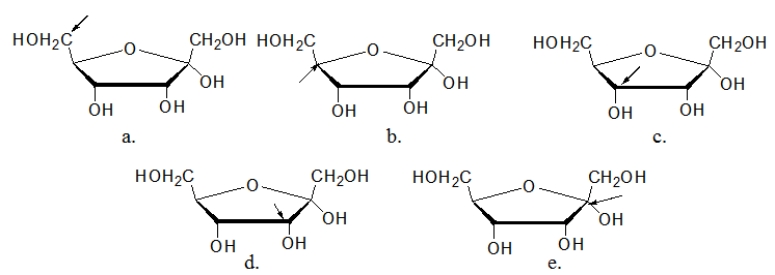
A) structure a
B) structure b
C) structure c
D) structure d
E) structure e
Correct Answer

verified
Correct Answer
verified
Multiple Choice
Which is the BEST definition for diabetes?
A) Diabetes is hypoglycemia due to an excess of insulin.
B) Diabetes is hypoglycemia due to insulin resistance or insufficient insulin.
C) Diabetes is hyperglycemia due to an excess of insulin.
D) Diabetes is hyperglycemia due to insulin resistance or insufficient insulin.
E) Diabetes is any disorder of blood sugar.
Correct Answer

verified
Correct Answer
verified
Multiple Choice
Most animals cannot digest cellulose.However, those with a second stomach, containing specific bacteria that produce β-glycosidases, can digest cellulose.What is the role of the β-glycosidase in digesting cellulose?
A) β-glycosidase catalyzes the oxidation of cellulose.
B) β-glycosidase catalyzes the isomerization of β-glycosidic bonds into α-glycosidic bonds.
C) β-glycosidase catalyzes the reduction of cellulose.
D) β-glycosidase catalyzes the hydrolysis of cellulose.
E) β-glycosidase catalyzes the dehydration of cellulose.
Correct Answer

verified
Correct Answer
verified
Multiple Choice
The circled carbon in the cyclic structure of glucose corresponds to which boxed carbon in the linear structure? 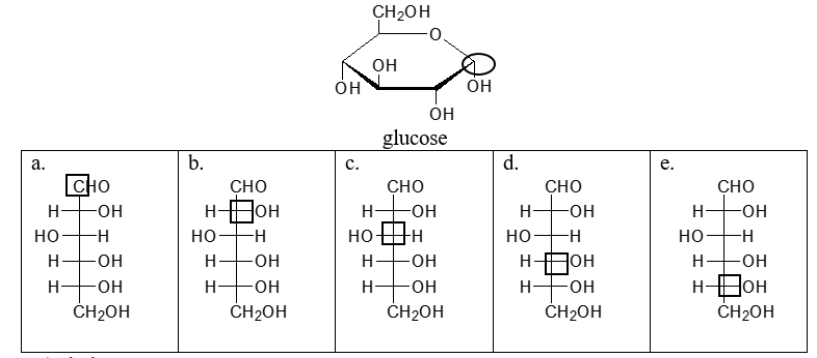
A) choice a
B) choice b
C) choice c
D) choice d
E) choice e
Correct Answer

verified
Correct Answer
verified
Multiple Choice
Which carbon of L-dopa is a chirality center? 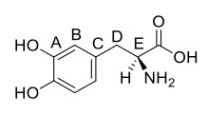
A) carbon A
B) carbon B
C) carbon C
D) carbon D
E) carbon E
Correct Answer

verified
Correct Answer
verified
Multiple Choice
A patient with chronic pancreatitis has her pancreas removed.Which of the following effects would be most likely?
A) nothing
B) the regeneration of the pancreas
C) type I diabetes
D) type II diabetes
E) hypoglycemia
Correct Answer

verified
Correct Answer
verified
Multiple Choice
Which of the following statements describes the role of insulin in the body? I.Insulin signals to cells to allow glucose to enter. II) Insulin stimulates the conversion of glucose to glycogen. III) Insulin stimulates the hydrolysis of glucose from glycogen.
A) All of these describe the role of insulin in the body.
B) I only
C) II only
D) III only
E) I and II
Correct Answer

verified
Correct Answer
verified
Multiple Choice
Which of the following sugars is the enantiomer of D-glucose? 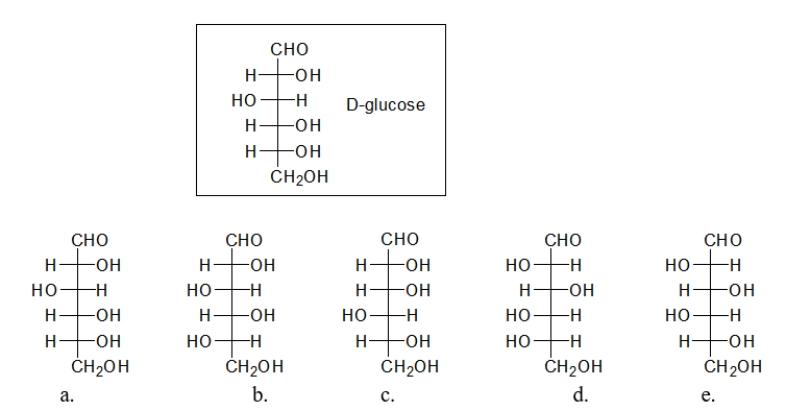
A) sugar a
B) sugar b
C) sugar c
D) sugar d
E) sugar e
Correct Answer

verified
Correct Answer
verified
Multiple Choice
Below is the open-chain form of fructose, followed by several cyclic monosaccharides.Choose the cyclic monosaccharides that are the ring form of fructose. 
A) Only structure II is D-fructose.
B) Only structure III is D-fructose.
C) Both structures I and II are D-fructose.
D) Both structure III and IV are D-fructose.
E) All of these structures are D-fructose.
Correct Answer

verified
Correct Answer
verified
Multiple Choice
The Fischer projection for fructose is shown below.Which functional group(s) does fructose contain? 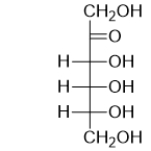
A) an aldehyde only
B) hydroxyl groups only
C) hydroxyl groups and an alkene
D) hydroxyl groups and a ketone
E) hydroxyl groups and an aldehyde
Correct Answer

verified
Correct Answer
verified
Multiple Choice
Which statement does NOT describe the anomeric carbon?
A) It is the carbon of the carbonyl in the open-chain form of the sugar.
B) This carbon is attached to two oxygens in the ring form of the compound.
C) The hydroxyl group on this carbon can be above or below the ring.
D) Glucose does not contain an anomeric carbon.
E) The anomeric carbon is a chirality center.
Correct Answer

verified
Correct Answer
verified
Multiple Choice
Which disaccharide is the common type of sugar that comes from sugar cane or beets?
A) lactose
B) sucrose
C) cellobiose
D) maltose
E) both cellobiose and maltose
Correct Answer

verified
Correct Answer
verified
Multiple Choice
Animals store energy in the form of
A) amylose.
B) amylopectin.
C) glycogen.
D) cellulose.
E) amylose and amylopectin.
Correct Answer

verified
Correct Answer
verified
Multiple Choice
Which structures is an α-anomer? 
A) structure a
B) structure b
C) structure c
D) structure d
E) structure e
Correct Answer

verified
Correct Answer
verified
Multiple Choice
Which glycosidic linkage does the sugar shown below contain? 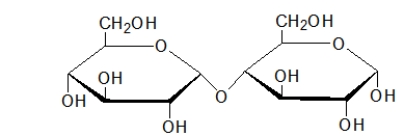
A) β-(2→4)
B) α-(1→4)
C) β-(1→4)
D) α-(2→4)
E) α-(2→6)
Correct Answer

verified
Correct Answer
verified
Multiple Choice
Which molecule is chiral? 
A) molecule a
B) molecule b
C) molecule c
D) molecule d
E) molecule e
Correct Answer

verified
Correct Answer
verified
Multiple Choice
What is the relationship between the following two molecules? 
A) They are enantiomers.
B) They are identical.
C) They are conformers.
D) They are constitutional isomers.
E) They are unrelated.
Correct Answer

verified
Correct Answer
verified
Multiple Choice
In which of the sugars below is the arrow pointing to the carbon that determines whether a sugar is α- or β-? 
A) structure a
B) structure b
C) structure c
D) structure d
E) structure e
Correct Answer

verified
Correct Answer
verified
Multiple Choice
Which disaccharide has glycosidic bonds to the anomeric carbons of both monosaccharides?
A) lactose
B) sucrose
C) cellobiose
D) maltose
E) both cellobiose and maltose
Correct Answer

verified
Correct Answer
verified
Showing 41 - 60 of 97
Related Exams